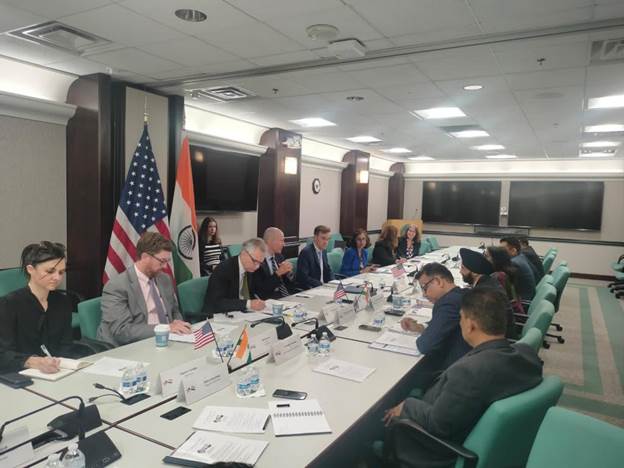With an aim to advance new and emerging renewable technologies, a meeting between the U.S. Department of Energy (DOE) and the Ministry of New and Renewable Energy (MNRE), was held on August 29, 2023.
In the meeting, the delegations exchanged insights regarding the latest advancements in technology within their respective nations. These encompassed various areas such as hydrogen, energy storage, wind, geothermal energy, and marine renewable energy technologies, along with programs aimed at promoting the adoption of clean energy.
The meeting also intends to launch the new U.S. – India Renewable Energy Technology Action Platform (RETAP) under the Strategic Clean Energy Partnership. This partnership was announced during the June 22, 2023 meeting in Washington D. C., between Prime Minister Narendra Modi and U.S President Joe Biden. The two leaders announced the expansion of collaboration on new and emerging technologies to accelerate the clean energy transition.
The RETAP was established to take bilateral collaboration further with a result-oriented, time-bound technology-focus. It is intended to advance new and emerging renewable technologies with a view toward deployment and scaling. RETAP’s initial focus is to be on green/clean hydrogen, wind energy, long duration energy storage, and to explore geothermal energy, ocean/tidal energy and other emerging technologies as mutually determined in the future.
The initial workplan regarding RETAP collaboration is guided by five themes that include:
– Research & Development
– Piloting & Testing of Innovative Technologies
– Advanced Training & Skill Development
– Policy and Planning for Advancing RET and enabling technologies
– Investment, Incubation and Outreach programmes
The Strategic Clean Energy Partnership’s Renewable Energy Pillar objectives are aligned to drive faster deployment of renewable energy for inclusive and resilient development, taking into account national circumstances and sustainable development priorities. The overarching goal is to enhance equitable economic development, universal energy access, and energy security in India, with broader benefits through South Asia and the Indo-Pacific region as a whole.










